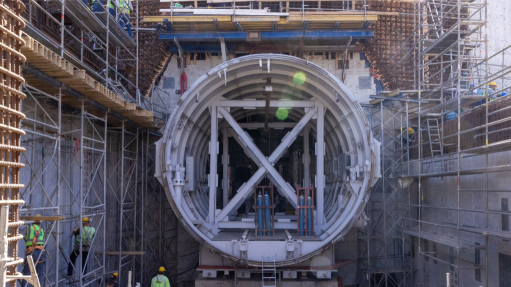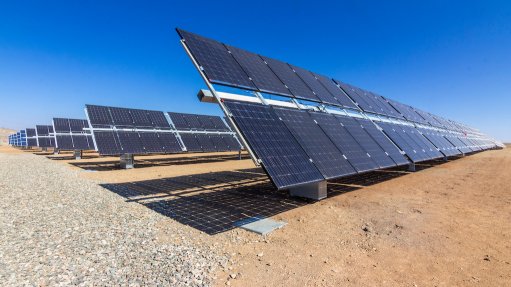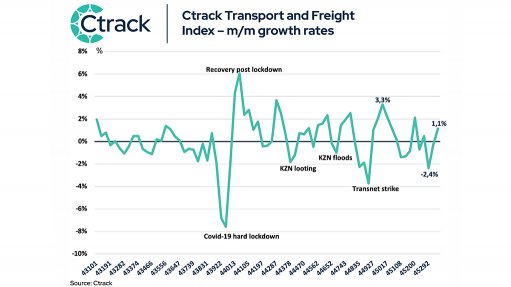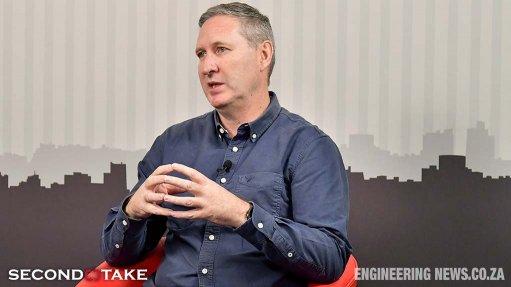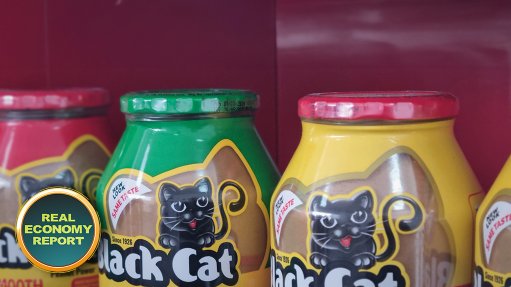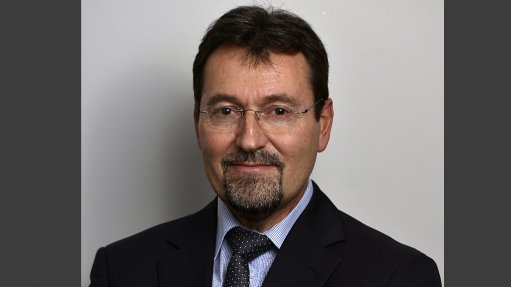DBSA reports increased debt funding in six months ended September 30
Development finance institution (DFI) the Development Bank of Southern Africa (DBSA) said total debt funding increased to R60-billion for the interim period ended September 30, up from R55-billion as at March 31, primarily owing to currency movements.
Despite an increase in debt funding, loan disbursement activities amounted to about R4.5-billion and development bonds disbursement amounted to R1-billion, the bank added.
Loan repayments from the loan book reached R8.4-billion, comprising principal loan repayments of R4.7-billion and interest repayments of R3.7-billion.
Despite the operating environment remaining challenging, net profit for the interim period increased to R2.8-billion from R2.2-billion in the prior interim period. The net profit for the current interim period arose mainly from solid growth in net interest income during the current interim period, amounting to 14% when compared with the prior interim period. The return on equity for the current interim period decreased to 6.4% when compared to 8.8% for the prior year, the bank noted.
DBSA lends in dollars and euros to fund projects outside of South Africa.
Consequently, the bank has a net foreign currency asset position and, given the depreciation of the rand against the dollar and euro during the interim period, foreign currency exchange rate gains amounted to R826-million compared with a foreign currency exchange rate gain of R179-million in the prior interim period.
While the foreign currency position was not fully hedged, the DBSA closely monitored and managed its exposure to foreign exchange rate risk using natural hedges and derivative hedging strategies, it said on December 2.
"The bank remains efficient in managing operational costs and the cost optimisation strategy continues to be effective. The total cost-to-income ratio for the current interim period marginally increased to 24%, compared to 22% at September 30, 2021, and the ratio continues to track in line with the bank’s cost optimisation strategy and limit of 35%."
Further, the bank’s liquidity and capital positions remain strong. Notwithstanding the disruption and challenges surrounding the local economy of the local fixed income market, the DBSA has been successful in raising funding from international DFIs, international and local commercial banks and concluded private placements.
"The total liquidity position of the bank substantially increased by about R1.1-billion to R9.1-billion as at September 30, from R8-billion as at March 31, representing an increase of 14% in cash and cash equivalents year-on-year.
"The bank’s policy is to manage liquidity levels in line with the Basel 3-liquidity coverage ratio. Since the onset of the Covid-19-driven market dislocation, liquidity is being conservatively managed at a level closer to 90-day cover," the DBSA said in its results statement.
As at September 30, the 30-day liquidity coverage ratio amounted to 332%, compared with 1 271% as at March 31.
"The bank continues to have strong capital buffers for unexpected events. The debt-to-equity ratio, including the R20-billion callable capital at September 30 increased to 93%, up from 88% at March 31, and this remains well below the bank’s regulatory debt-to-equity ratio cap of 250%," it noted.
Additionally, the bank’s capital ratio, expressed as a percentage of balance sheet shareholder capital to unweighted total assets, marginally decreased to 42% at September 30, from about 43% at the end of March owing to the growth in balance sheet assets. DBSA's balance sheet equity position increased by R2.5-billion during the interim period to R45.4-billion at September 30, 2022, from R42.9-billion at the end of March.
Further, despite a marginal improvement in the macro-economic base compared to the same period in the prior year, the bank experienced an increase in expected credit loss provisions amounting to R520-million on the back of marginal deterioration in the overall credit risk profile of the loan book and average probability of default of the loan book increasing marginally when compared to the year ended March 31.
The bank decreased its expected credit loss coverage levels on the loan book to 11.8% at September 30, from about 12.2% at March 31. This resulted in the balance sheet provision for expected credit losses, or impairment provision, increasing by approximately 3% to R12-billion, up from R11.7-billion at the end of March, in line with gross loan book growth of approximately 6%.
"However, when compared to the interim period ended September 30, 2021, the expected credit loss provision, or impairments, charge in the income statement increased by 41% to approximately R556-million in the current interim period up from R395-million in the prior interim period," the DBSA said.
Additionally, the net non-performing loan ratio, which is net non-performing loans to net development loan book, decreased marginally to 1.3% of the total loan book at September 30, from 1.4% as at March 31.
The gross non-performing loan ratio, or gross non-performing loans to total gross development loan book, increased to about 4.8% at September 30, from about 4.6% at March 31. The expected credit loss coverage ratios for the gross non-performing loans and credit-impaired loans increased to 76% from 73.2% at March 31.
Meanwhile, the DBSA’s total asset base reached a new record of R108-billion as at September 30, representing an overall increase of 8% when compared to March 31.
Development loan disbursements decreased by 35% to R4.5-billion in the current interim period from R6.9-billion in the prior interim period.
Further, at September 30, the equity investment portfolio increased by 5% to R5.2-billion from R5-billion as at March 31, as a result of new disbursements, currency movements, capital redemptions and offsetting negative fair value adjustments.
Overall, South Africa continues to face a myriad of challenges such as poverty, inequality, power supply disruptions and slow service delivery. Unemployment improved marginally in the first half of the year, but declining formal employment numbers in the second quarter of the year paint a different picture.
Locally, the South African economy took almost two years to recover from the impact of Covid-19 with two consecutive quarters of positive growth in real gross domestic product (GDP) in the fourth quarter of 2021 and the first quarter of this year, the bank said.
This progress has subsequently been reversed with real GDP declining by 0.7% in the second quarter of 2022. The prospect of a global recession coupled with the challenges South Africa currently faces will test its economic resilience to a large degree. Further to this, there is an imminent risk associated with South Africa’s potential grey listing for failure to timeously enact laws in line with Anti Money Laundering and Combating the Financing of Terrorism standards, the DBSA noted in its results.
"Despite the impact of the current economic challenges both locally and from an international perspective, the DBSA remains focused, in line with its mandate, on pursuing its growth strategy designed to augment disbursements through emphasis on its catalytic role aimed at contributing to sustainable infrastructure development beyond the confines of its own balance sheet.
"Through this strategy, the bank aims to crowd in third-party funding through derisking projects using early-stage project preparation and structuring and innovative solutioning," the DBSA highlighted.
The Auditor-General of South Africa has expressed an unmodified review conclusion on the condensed interim financial statements of the DBSA.
Further, the DV23 bond with a nominal value of R7.8-billion is due to mature in February 2023. In anticipation of the DV23 bond redemption, the bank undertook switch auctions, repurchasing of the DV23 bond prior to its maturity, as well as stakeholder engagement.
Comments
Press Office
Announcements
What's On
Subscribe to improve your user experience...
Option 1 (equivalent of R125 a month):
Receive a weekly copy of Creamer Media's Engineering News & Mining Weekly magazine
(print copy for those in South Africa and e-magazine for those outside of South Africa)
Receive daily email newsletters
Access to full search results
Access archive of magazine back copies
Access to Projects in Progress
Access to ONE Research Report of your choice in PDF format
Option 2 (equivalent of R375 a month):
All benefits from Option 1
PLUS
Access to Creamer Media's Research Channel Africa for ALL Research Reports, in PDF format, on various industrial and mining sectors
including Electricity; Water; Energy Transition; Hydrogen; Roads, Rail and Ports; Coal; Gold; Platinum; Battery Metals; etc.
Already a subscriber?
Forgotten your password?
Receive weekly copy of Creamer Media's Engineering News & Mining Weekly magazine (print copy for those in South Africa and e-magazine for those outside of South Africa)
➕
Recieve daily email newsletters
➕
Access to full search results
➕
Access archive of magazine back copies
➕
Access to Projects in Progress
➕
Access to ONE Research Report of your choice in PDF format
RESEARCH CHANNEL AFRICA
R4500 (equivalent of R375 a month)
SUBSCRIBEAll benefits from Option 1
➕
Access to Creamer Media's Research Channel Africa for ALL Research Reports on various industrial and mining sectors, in PDF format, including on:
Electricity
➕
Water
➕
Energy Transition
➕
Hydrogen
➕
Roads, Rail and Ports
➕
Coal
➕
Gold
➕
Platinum
➕
Battery Metals
➕
etc.
Receive all benefits from Option 1 or Option 2 delivered to numerous people at your company
➕
Multiple User names and Passwords for simultaneous log-ins
➕
Intranet integration access to all in your organisation






